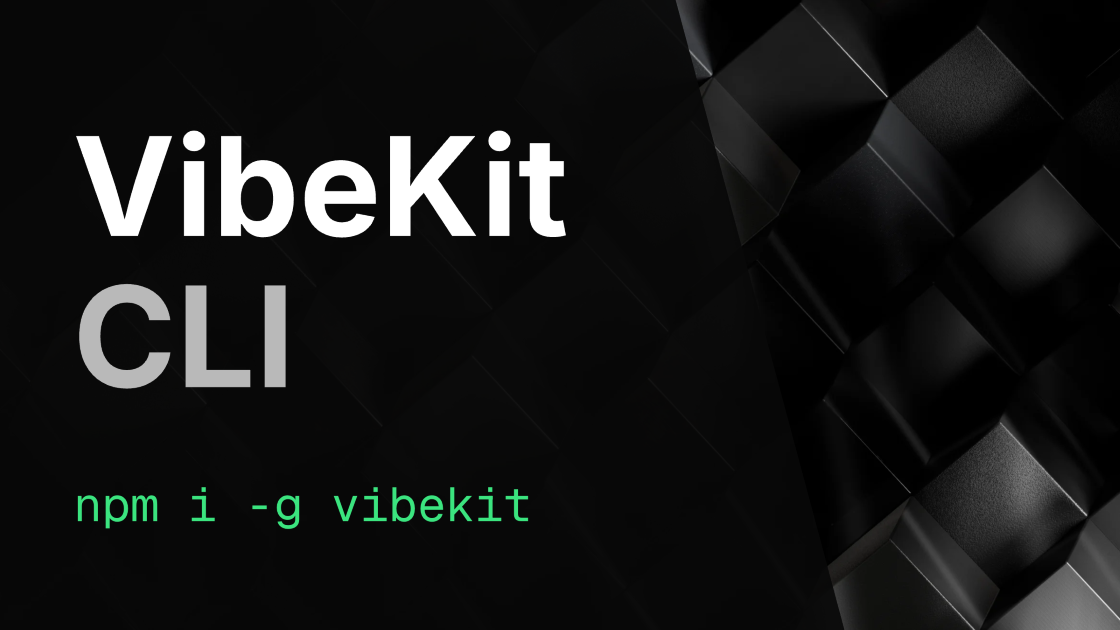In the vast landscape of Yu-Gi-Oh!, few archetypes have captivated players' imagination quite like Gusto and Dragunity.
Both Gusto and Dragunity stand as fascinating wind-attribute archetypes within the Yu-Gi-Oh! Duel Terminal storyline. These distinctive deck strategies have captured players' imaginations through their unique playstyles and thematic elements. Their contrasting approaches to gameplay-Gusto's recursive defense versus Dragunity's explosive offense-offer duelists compelling options when selecting a wind-attribute strategy.
The Duel Terminal saga introduced numerous interconnected archetypes, with Gusto and Dragunity representing different aspects of the Wind attribute's potential. Gusto focuses on recursive gameplay and float effects when destroyed, creating a defensive wall that gradually builds advantage. Dragunity, meanwhile, emphasizes explosive Synchro plays through equipping Dragon-type Tuners to Winged Beast monsters.
Both archetypes have received support over the years, evolving from their initial releases to incorporate modern mechanics. While they share the Wind attribute and have appeared in several of the same product releases, their gameplay philosophies diverge significantly in ways that appeal to different types of duelists.
How Do Gusto Decks Achieve Recursion?
At the heart of the Gusto strategy lies their impressive ability to maintain field presence through constant recursion. The core Gusto engine revolves around monsters that float into each other when destroyed, creating an endless defensive chain that frustrates opponents. Cards like "Gusto Griffin" exemplify this philosophy, allowing players to Special Summon Gusto monsters from the Deck when sent from hand to Graveyard.
The archetype's backbone consists of its Recruiter monsters such as "Gusto Falco," "Gusto Gulldo," and "Gusto Egul." When destroyed by battle or card effects, these monsters Special Summon lower-level Gustos from the Deck, maintaining field presence while thinning the deck. This constant recycling creates a defensive wall while setting up their Synchro plays, giving Gusto players a sustainable resource engine.
"Pilica, Descendant of Gusto" represents a critical evolution in the archetype's design. Upon Normal Summon, she Special Summons a Gusto Tuner from the Graveyard, facilitating access to powerful Synchro monsters like "Daigusto Sphreez" or generic Wind-attribute options. This recursion-to-Synchro pipeline forms the core gameplay loop for Gusto duelists, allowing them to establish both defensive and offensive options.
Gusto Support Cards That Enhance Recursion
Support cards like "Whirlwind of Gusto" and "Tailwind of Gusto" enhance the archetype's recursive nature. These spells and traps provide additional ways to recycle Gusto monsters from various zones, creating a self-sustaining engine that grows stronger as the duel progresses.
The key benefits these support cards provide include:
- Resource recovery: Returning Gusto monsters from the Graveyard to hand
- Deck recycling: Shuffling monsters back into the Deck to trigger additional effects
- Field presence: Maintaining consistent monsters on board despite opponent removal
- Combo extension: Enabling additional Synchro plays through resource recovery
This sustainability allows Gusto players to outlast opponents through attrition while gradually building resources for game-ending plays. The archetype thrives in longer duels where their constant recursion can overwhelm opponents who have exhausted their removal options, creating a unique gameplay experience focused on patience and timing.
What Makes Dragunity's Synchro Strategy Powerful?
Dragunity's design philosophy stands in stark contrast to Gusto's patient approach. Built around rapid Synchro climbing and powerful equip effects, Dragunity aims to establish oppressive board states as quickly as possible. The archetype interweaves Winged Beast monsters with Dragon-type Tuners through a unique equipping mechanic that facilitates explosive Synchro plays.
The archetype's core combo begins with "Dragunity Dux," which upon Normal Summon equips a level 3 or lower Dragon-type "Dragunity" monster from the Graveyard. This typically targets "Dragunity Phalanx," whose effect allows it to Special Summon itself while equipped, creating instant Synchro Material. This basic two-card combo enables access to powerful Synchro monsters like "Dragunity Knight - Vajrayana," which can further extend plays.
"Dragunity Legionnaire" offers additional utility by equipping Tuners like "Dragunity Aklys," whose destruction effect enables strategic removal of opponent's cards. This combo-oriented design allows Dragunity to rapidly establish threats while simultaneously disrupting the opponent's board, creating multiple layers of interaction in a single turn.
Dragunity's Key Support Cards
Support cards like "Dragon Ravine" provide exceptional consistency to the Dragunity strategy. This Field Spell serves as the engine that powers Dragunity's explosive plays by facilitating setup and resource management.
"Dragon Ravine" and other support cards offer these advantages:
- Search capability: Finding key Dragunity monsters to start combos
- Graveyard setup: Sending Dragon-type monsters to prepare for equip effects
- Protection: "Dragunity Divine Lance" shields monsters from Trap effects
- Power boost: Equipment cards provide additional ATK based on level
These tools make Dragunity one of the most explosive and consistent combo-oriented archetypes within the Wind attribute. Their ability to establish multiple negates and disruptions in a single turn creates formidable board states that many opponents struggle to overcome without specific counter strategies.
Which Synchro Monsters Define These Archetypes?
Both Gusto and Dragunity showcase their distinct gameplay philosophies through their signature Synchro monsters. These powerful Extra Deck monsters often serve as win conditions and embodiments of their archetypes' core mechanics, defining how each strategy approaches the game.
For Gusto, "Daigusto Sphreez" stands as the archetype's quintessential boss monster. This Level 6 Synchro monster redirects battle damage that would be taken from attacks involving Gusto monsters back to the opponent. Combined with Gusto's recursive floating effects, Sphreez creates a nearly unbreakable defensive loop that can potentially defeat opponents through their own battle damage, turning defense into offense in a unique way.
Dragunity's Synchro arsenal takes a more aggressive stance with monsters like "Dragunity Knight - Vajrayana," which can double its ATK by sending an equipped card to the Graveyard. This enables massive damage output or serves as stepping stone to higher-level Synchros. "Dragunity Knight - Ascalon" represents the archetype's modern powerhouse, capable of banishing opponent's monsters by banishing Dragunity monsters from the Graveyard, providing both offensive pressure and disruption.
How Synchro Monsters Support Their Strategies
Each archetype's Synchro monsters complement their core gameplay in distinct ways. These Extra Deck powerhouses serve specific roles that enhance their respective strategies and provide win conditions.
Gusto's Synchro lineup includes:
- Daigusto Sphreez: Redirects battle damage to opponents
- Daigusto Gulldos: Provides targeted removal by shuffling Gusto monsters back to the Deck
- Daigusto Eguls: Offers protection effects for Gusto monsters
- Daigusto Falcos: Enables additional recursion through its floating effects
Dragunity's Synchro arsenal focuses on aggressive plays and board control through monsters like "Dragunity Knight - Barcha" and "Dragunity Knight - Gae Dearg." These Synchros provide additional utility through mass equipping and searching capabilities respectively, showcasing how Dragunity's Synchro lineup supports its equipment-based strategy while presenting formidable offensive threats that can quickly end games.
How Do Resource Management Styles Differ?
A fundamental contrast between Gusto and Dragunity lies in their approach to resource management. Understanding these differences is crucial for mastering either archetype and appreciating their unique contributions to the Yu-Gi-Oh! competitive landscape.
Gusto operates on a conservative resource model, carefully preserving cards and leveraging their floating effects to maintain advantage over time. Rather than expending multiple cards for immediate impact, Gusto players gradually accumulate resources through their recursive effects. Cards like "Winda, Priestess of Gusto" and "Reeze, Whirlwind of Gusto" exemplify this philosophy, returning to the hand or Special Summoning other Gusto monsters when destroyed.
Conversely, Dragunity employs an explosive resource utilization strategy, often committing multiple cards to establish powerful boards quickly. Their reliance on combos means they typically expend significant hand and field resources early to create advantageous positions. "Dragon Ravine" epitomizes this approach, trading card advantage for setup potential by discarding cards to enable powerful plays.
Graveyard Utilization Techniques
These contrasting philosophies extend to Graveyard management as well. Each archetype views the Graveyard through a different lens, using it to support their core strategy in distinct ways.
Gusto treats the Graveyard as:
- Temporary storage: Monsters frequently return to hand or Deck
- Recursion source: Effects trigger from the Graveyard to maintain advantage
- Synchro material: Resources for summoning boss monsters when needed
- Protection zone: Safe storage for monsters that will return through effects
Dragunity, however, views the Graveyard as an extension of their hand, using it as a resource pool for equipping effects and Synchro Materials through cards like "Dragunity Senatus" and "Dragunity Divine Lance." This fundamental difference in resource philosophy creates distinct gameplay experiences despite both archetypes sharing the Wind attribute and Duel Terminal origins.
What Tournament Success Have These Decks Achieved?
Throughout Yu-Gi-Oh!'s competitive history, Gusto and Dragunity have experienced varying levels of success. Their tournament performances reflect not only their inherent strengths but also how they've adapted to changing metas and rule systems over the years.
Dragunity enjoyed considerable competitive success during the early Synchro era, particularly following the release of Structure Deck: Dragunity Legion. Their ability to consistently access powerful Synchro monsters made them a formidable rogue choice in many formats. The semi-limiting of "Dragon Ravine" in 2013 significantly impacted their competitiveness, acknowledging the power of their engine and forcing adaptation.
Gusto, meanwhile, has rarely dominated tournament scenes but has maintained a dedicated player base attracted to its unique defensive playstyle. The archetype found its most competitive success when paired with complementary engines, particularly the Windwitch engine which provided additional Wind support and access to Crystal Wing Synchro Dragon. Pure Gusto builds have typically struggled against modern Yu-Gi-Oh!'s increasingly offensive meta, where games are often decided in the first few turns.
Modern Competitive Adaptations
Both archetypes have evolved to remain relevant in contemporary formats. These adaptations showcase how classic archetypes can find new life through creative deck building and strategic tech choices.
Modern competitive builds include:
- Dragunity Dragon Link hybrids that leverage Dragon synergy for extended combos
- Gusto Windwitch variants that access powerful generic Synchros
- Dragunity Guardragon builds that establish multiple negation effects
- Gusto control strategies focusing on disruption and resource denial
Both archetypes have seen periodic resurgences with the release of generic Wind support, such as the Speedroid engine and Link monsters like "Gusto Bora." While neither currently stands at the forefront of tournament play, both maintain presence as respected rogue strategies capable of surprising unprepared opponents.
How Should You Build These Decks?
Constructing effective Gusto and Dragunity decks requires understanding their core components while intelligently incorporating tech options. Though built around different win conditions, both archetypes benefit from careful deck construction that balances consistency with power.
A competitive Gusto deck typically includes a full complement of their Recruiter monsters-"Gusto Egul," "Gusto Gulldo," and "Gusto Falco"-to maximize the floating chain. "Pilica, Descendant of Gusto" serves as a primary Normal Summon target for immediate Synchro access. The Windwitch engine frequently appears in modern builds, with "Windwitch - Ice Bell" providing a consistent path to Crystal Wing Synchro Dragon.
Dragunity decks center around "Dragunity Dux," "Dragunity Phalanx," and "Dragunity Legionnaire" as their core combo starters. Three copies of "Dragon Ravine" and search cards like "Terraforming" ensure consistent access to these key pieces. Modern builds incorporate the "Dragunity Divine Lance" equipment spell to protect their monsters from trap effects while enabling further extension.
Essential Tech Choices For Maximum Impact
Tech options can significantly enhance the performance of both archetypes. These strategic inclusions address weaknesses and improve consistency against the broader meta:
- Hand traps like "Effect Veiler" and "Ash Blossom & Joyous Spring" provide disruption while synergizing with Wind strategies
- "Called by the Grave" protects combos from hand trap interruption, especially crucial for Dragunity
- Generic Wind support like "Speedroid Terrortop" offers additional extenders
- Link monsters such as "Crystron Halqifibrax" create new combo routes for both archetypes
Both archetypes benefit from carefully constructed Extra Decks, though their approaches differ significantly. Gusto focuses on toolbox options while Dragunity prioritizes powerful boss monsters and extension pieces like Hieratic Link monsters and generic Dragon support, reflecting their distinct gameplay philosophies.
What Are Their Matchup Strengths and Weaknesses?
When examining how Gusto and Dragunity fare against the broader meta and each other, distinct patterns emerge that highlight their comparative strengths and vulnerabilities. Understanding these matchup dynamics is crucial for pilots of either deck or those preparing to face them.
Gusto generally performs well against aggressive strategies that rely on battle damage, as their floating effects ensure constant field presence while "Daigusto Sphreez" can turn opponents' attacks against them. The deck struggles against heavy disruption and negation-focused strategies that can prevent their recursive effects from activating. Banish-heavy decks pose a particular challenge, as they circumvent Gusto's Graveyard-dependent recursion.
Dragunity excels against unprepared opponents who lack sufficient interruption, as their combos can rapidly establish boards with multiple negation effects. Their weakness lies in vulnerability to hand traps and disruption during their combo sequences. "Ash Blossom & Joyous Spring" targeting "Dragon Ravine" or "Effect Veiler" on key Normal Summons can severely hamper their ability to establish board presence.
Specific Matchup Considerations
Different meta matchups present unique challenges for both archetypes. Knowing how to navigate these matchups is essential for competitive success:
- Against control decks: Gusto's recursion can outlast removal, while Dragunity must push through disruption quickly
- Against combo decks: Dragunity can race to establish its own board, while Gusto struggles to keep pace
- Against midrange strategies: Both archetypes can compete effectively with proper tech choices
- Against each other: Dragunity typically holds the advantage due to superior speed, but Gusto can win through attrition
In a direct matchup between these archetypes, Dragunity typically holds the advantage due to superior speed and disruption capabilities. However, if Gusto survives the initial onslaught and establishes its recursive engine with "Daigusto Sphreez," they can potentially outlast Dragunity's explosive but less sustainable strategy.
How Has Modern Support Evolved These Archetypes?
Both Gusto and Dragunity have received modern support that has evolved their strategies and helped them adapt to contemporary Yu-Gi-Oh!. These newer additions have addressed some of their traditional weaknesses while enhancing their core mechanics to remain relevant in an ever-accelerating game.
Gusto received significant evolution with the introduction of "Pilica, Descendant of Gusto," which addressed one of the archetype's primary weaknesses by providing immediate Synchro access without requiring monsters to be destroyed first. This proactive approach represented a philosophical shift from their purely reactive origins. More recently, Link Monster support in "Daigusto Bora" has further modernized the archetype, providing additional recursion while serving as a Link arrow provider for Extra Deck plays.
Dragunity has seen even more substantial modernization, particularly with "Dragunity Knight - Ascalon" and the Dragunity Link monsters. "Dragunity Knight - Romulus" revolutionized the archetype by providing consistent access to "Dragon Ravine" while establishing additional combo routes. "Dragunity Remus" and "Dragunity Senatus" offered alternative Normal Summon options beyond the traditional "Dragunity Dux," increasing the deck's flexibility and consistency.
How Generic Support Benefits Both Archetypes
Beyond archetype-specific cards, both Gusto and Dragunity have benefited from generic support that enhances their strategies:
- Link monsters: Provide additional zones for Extra Deck summoning
- Windwitch engine: Offers consistent access to powerful Synchros
- Speedroid support: Creates additional Wind-attribute synergy
- Hand trap options: Expands defensive capabilities for both archetypes
The introduction of Link Summoning has been particularly impactful, with cards like "Hierarchic Seal of the Heavenly Spheres" and "Crystron Halqifibrax" creating new combo routes that have kept these older archetypes competitive despite power creep. This evolution demonstrates how well-designed archetypes can remain relevant through strategic support releases that respect their core identities while updating their toolkits.
Which Wind Strategy Matches Your Playstyle?
When deciding between Gusto and Dragunity, players must consider not only competitive viability but also preferred playstyle and aesthetic preferences. Both archetypes offer unique experiences within the Wind attribute while appealing to different types of duelists.
Gusto appeals to players who enjoy defensive, resilient strategies that gradually accumulate advantage. Its recursive floating effects reward patience and careful resource management, making it ideal for duelists who prefer longer games where they can outmaneuver opponents. The archetype's nature-inspired artwork featuring children and magical creatures bonding with birds offers a cohesive aesthetic that many collectors appreciate.
Dragunity attracts players who enjoy explosive combo sequences and aggressive strategies. Its equipment-based mechanics and rapid Synchro climbing provide a sense of power and momentum that many find satisfying. The archetype's warrior-and-dragon aesthetic presents a more martial appearance that appeals to fans of fantasy warfare tropes, creating a distinct visual identity that complements its gameplay style.
Which Deck Offers Better Long-Term Value?
Both archetypes have demonstrated staying power in the Yu-Gi-Oh! ecosystem. Their continued support suggests ongoing value for players investing in either strategy:
- Gusto offers a unique playstyle rarely replicated in other archetypes
- Dragunity provides explosive power with periodic competitive relevance
- Both benefit from ongoing generic Wind support
- Each maintains a dedicated player base and collector interest
Both archetypes have received continued support over the years, suggesting Konami recognizes their enduring popularity. Whether you prefer the patient recursion of Gusto or the explosive synchro plays of Dragunity, both offer rewarding experiences for duelists seeking distinctive Wind-attribute strategies that stand the test of time.
Why Should You Choose Your Wind Archetype Today?
The decision between Gusto and Dragunity ultimately comes down to personal preference and playstyle alignment. Each archetype offers unique strengths that appeal to different types of duelists, providing distinctive experiences within the Wind attribute family.
Gusto rewards players who enjoy strategic depth and resilience. The satisfaction of watching opponents struggle against your recursive engine while gradually building toward game-ending plays creates a unique gameplay experience. The archetype teaches valuable skills about resource management and timing that transfer to other decks, making it an excellent choice for players looking to develop their fundamental Yu-Gi-Oh! skills.
Dragunity provides the thrill of explosive combo sequences and powerful board establishment. The archetype's ability to rapidly climb through Synchro monsters and establish formidable fields appeals to players who enjoy technical combo execution and aggressive strategies. Its higher ceiling for competitive play makes it attractive for tournament-focused duelists seeking a Wind-attribute deck with proven potential.
How To Get Started With Your Chosen Archetype
Beginning your journey with either Gusto or Dragunity is straightforward with these steps:
- Research current builds: Examine recent tournament lists and community discussions
- Start with core cards: Focus on acquiring the essential monsters and support spells
- Practice basic combos: Master the fundamental sequences before adding complexity
- Gradually add tech options: Expand your deck as you become comfortable with its operation
The Wind attribute continues to receive support in modern Yu-Gi-Oh!, ensuring both archetypes will remain relevant options for years to come. Your choice between patient recursion or explosive synchro climbing will provide a rewarding deck-building and playing experience that showcases the diversity within Wind-attribute strategies. The journey with either archetype offers valuable insights into Yu-Gi-Oh!'s strategic depth while providing a distinctive gameplay experience that stands apart from mainstream meta options.
Simplify Startup Finances Today
Take the stress out of bookkeeping, taxes, and tax credits with Fondo’s all-in-one accounting platform built for startups. Start saving time and money with our expert-backed solutions.
Get Started









.png)









